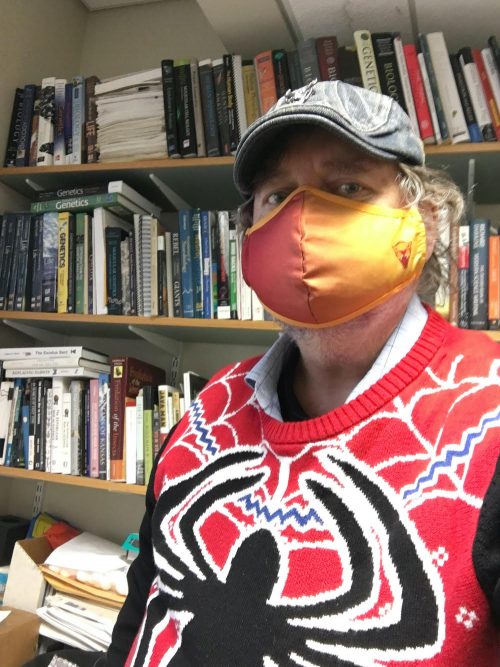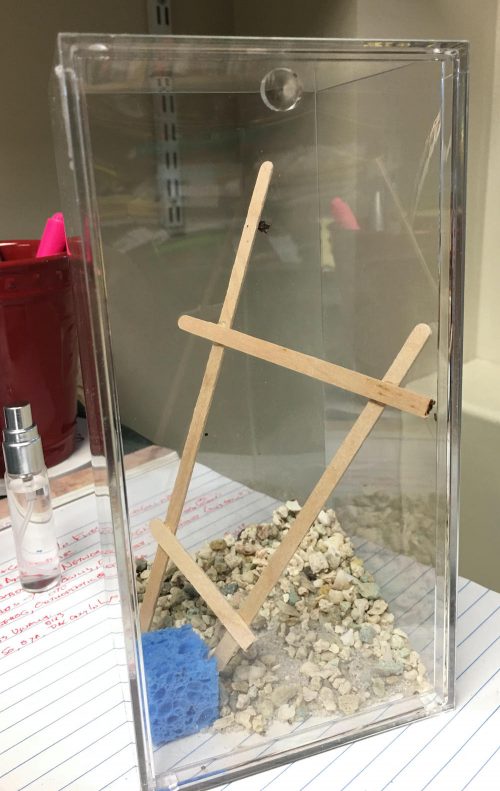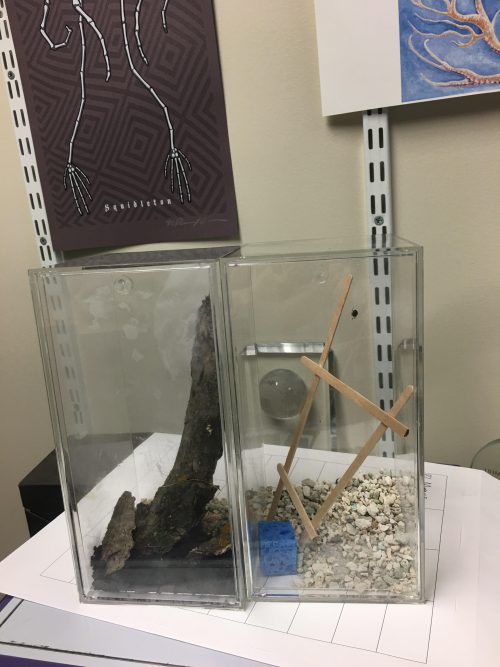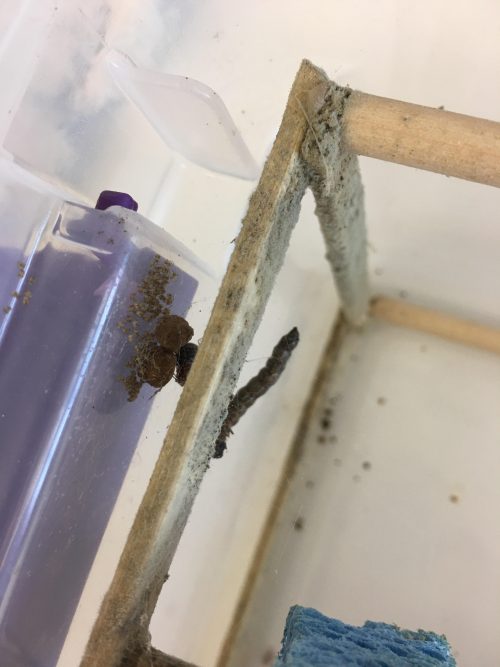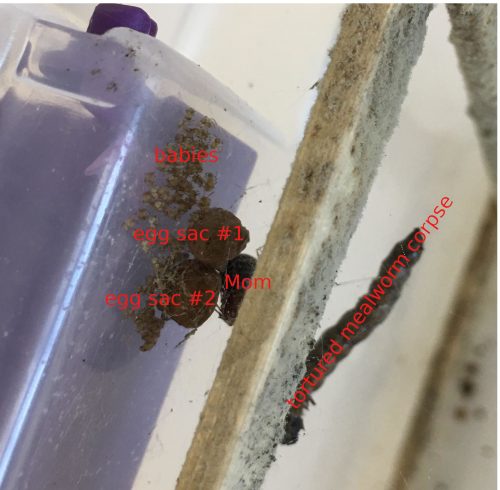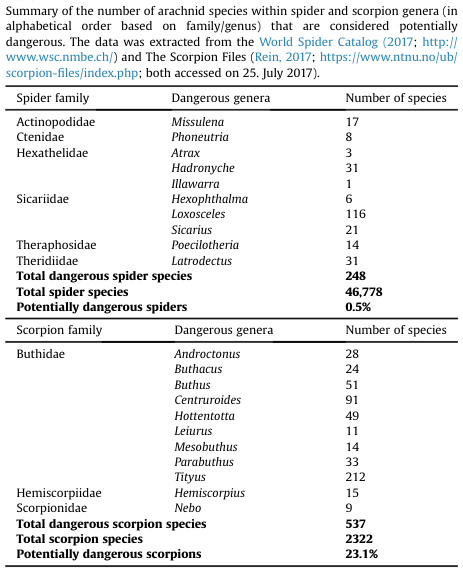All baby spiders are now accounted for, but I may not be done yet. There are two more egg sacs awaiting the emergence of more hordes of spiders in the lab, and the only thing that might be sparing me right now is the temperature. The science building is at 18°C right now, which is cruel and wasteful, but it’s been that way all summer, I don’t know why. I have to go home now to thaw out — my fingers are just frigid. The rest of me is OK, because this is how I dress in the lab now, in August.
It’s nice to have an excuse to wear my spider sweater in the summer, but still…
Also the hat is necessary to control my pandemic hair, so I can’t blame that on the physical plant.
Wait, you didn’t want to see a picture of me, you wanted to see a sexy photo of a mama spider and her great big egg sac? OK, I put it on Patreon and Instagram. Trust me, the spider is beautiful and maternal, despite having to deal with an unusually chilly environment.

